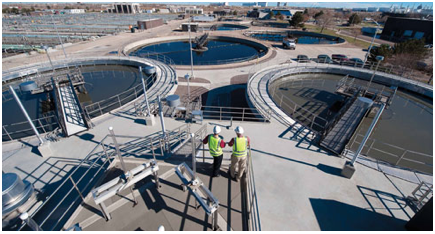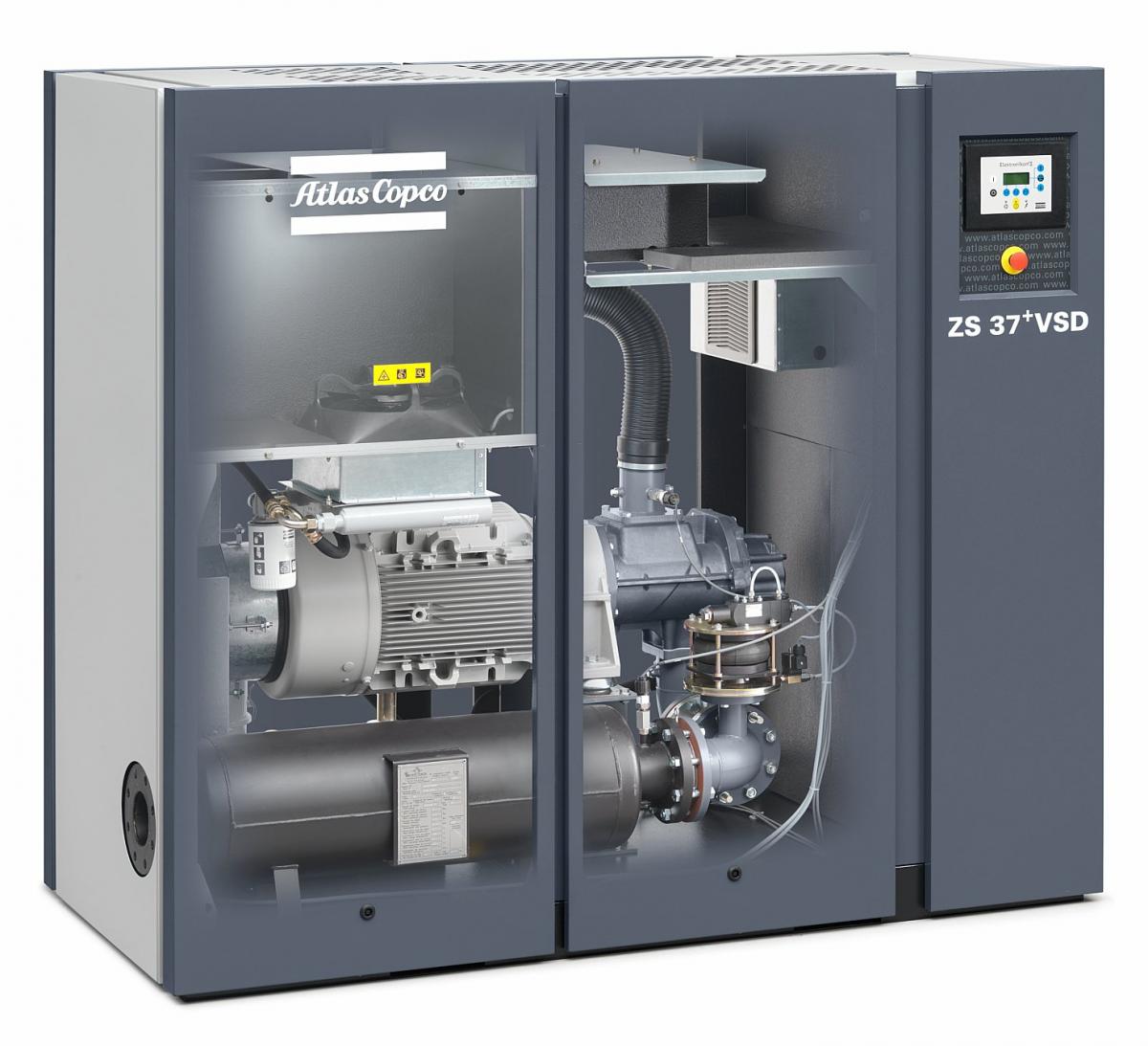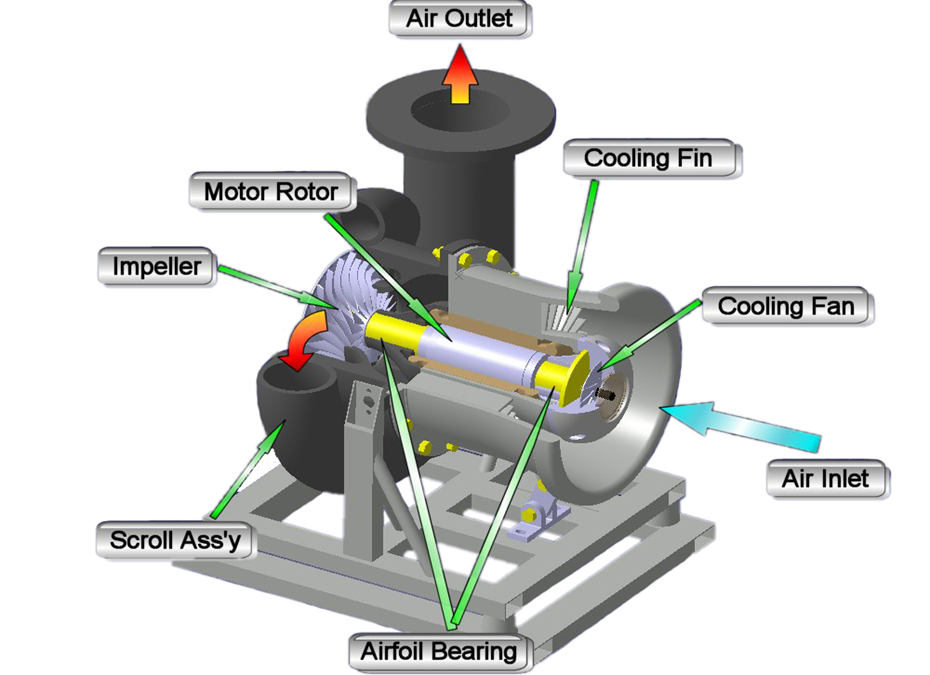|
|
Compressed Air Best Practices® Magazine interviewed Ms. Julie Gass P.E., Lead Process Mechanical Engineer, from Black & Veatch on trends in the wastewater treatment industry especially pertaining to new technology aeration blowers and energy efficiency.
Good afternoon. Please describe Black & Veatch.
Good afternoon. Black & Veatch is an employee-owned, global leader in building Critical Human Infrastructure™ in Energy, Water, Telecommunications and Government Services. Since 1915, we have helped our clients improve the lives of people in over 100 countries through consulting, engineering, construction, operations and program management. Our revenues in 2011 were US$2.6 billion. Black & Veatch service offerings include: Conceptual and preliminary engineering
- Procurement
- Engineering design
- Management consulting
- Construction
- Asset management
- Environmental consulting
- Security design and consulting
![]()

How does Black & Veatch segment the Water market?
Water is one of the world’s most precious resources. Managing and treating water are among the world’s most complex challenges. Black & Veatch knows the best and most advanced ways to clean, move, control and conserve water. That’s what makes us world leaders in water. Black & Veatch delivers comprehensivesolutions that help provide safe drinking water, effective wastewater management, and more to communities worldwide. We serve public and private clients of every size with a strong focus on life-cycle economy, efficiency and reliability.
The practice of classifying water into different categories can create division about water value and contribute to communication challenges, but for purposes of this discussion, we’ll focus on six types of services provided by Black & Veatch:
- Desalination and Reuse: the world faces a paradox of increasing water demand and dwindling resources. Adequate water supply of the future hinges on intelligent recovery and reuse. Black & Veatch is a pioneer and global leader in practical, economical water reclamation and reuse solutions. Our desalination experience covers membrane, thermal and hybrid designs for both seawater and brackish source waters.
- Infrastructure & Conveyance: Black & Veatch has a track record spanning nearly a century and has completed more than 10,000 water conveyance and storage projects. Nearly 12,000 miles of water, wastewater and stormwater buried infrastructure worldwide. No matter what technology or approach it takes to route, control, channel or store water, Black & Veatch can deliver. That knowledge base is comprised of civil, mechanical, structural, hydraulics and geotechnical engineers. Our practice also includes planners, geologists and construction managers. Areas of support expertise include water supply, chilled water, potable water, wastewater, combined sewer overflow, irrigation, hydropower applications, stormwater and flood control, and condition assessment.
- Program & Construction Management: We offer many services in a comprehensive approach to the field of Program and Construction Management (PMCM). It’s an approach that includes managing entire systems, improving project delivery and managing construction.
- Sustainable Water & Energy Solutions: Studies are predicting a significant increase in water usage leading to a shortfall in supply in many geographies and regions of the world. At the same time, utilities juggle the competing challenges of limited resources and greater needs. This is often complicated by the impact of aging infrastructure. The issue of power consumption at wastewater plants is closely tied with one of the main topics of this article, aeration blowers, since they are such a large power consumer. The new technology blowers and efforts to write a performance test code to verify performance are key to sustainable solutions.
- Water Resources: We deliver solutions that preserve and protect watersheds, manage storm drainage and flood control, and provide sustainable water supplies.
- Water & Wastewater Treatment: Black & Veatch knows how to solve water problems. We have expertise in drinking water supply, treatment and distribution. Our capabilities include:

A Dry Screw Blower (Courtesy Atlas Copco)
- Membrane treatment
- Ozone systems
- Ultraviolet disinfection
- Dissolved air flotation
- Desalination
What is your role at Black & Veatch?
I work in the Water & Wastewater Treatment division. I am a Mechanical Engineer and my role is to design new wastewater treatment plans and to design retrofits on exisiting plants. I am on-site, as we speak, at a wastewater treatment plant retrofit start-up. We designed this plant for our client.
So you decide what blowers and air compressor systems are used in a wastewater treatment plant?
Yes and it’s funny because depending upon who you talk to, the terms “blower” and “air compressor” can have different meanings. Some people call a blower an air compressor. I define a blower as something producing 3-25 psig pressure. Below that pressure range, I call it a fan. Above 25 psig, I call the machine an air compressor. Blowers, producing air in the 5-15 psig range, are what we typically use for the aeration process in wastewater treatment plants.
Air compressors are used for instrument air (operating pneumatic valves and instruments) and also for service air (air tools and other uses). Air compressors also supply our airburst systems. Airburst systems use compressed air at 125 to 150 psig to clean the screens used to protect fish from being drawn into intake pumps. The airburst system provides a large burst of air to clear debris from the screens. It usually takes us about an hour to fill the compressed air receivers used for the air burst.

Gearless Turbo Blowers installed at the Fond du Lac plant (Courtesy ABS USA)
What blower technologies have traditionally been used for aeration?
Over the past five to seven years, there has been a big revolution in blower technologies available for aeration. In the past, the two most common technologies were rotary positive displacement (PD blowers) and multistage centrifugal blowers, running at 3600 rpm with multiple impellers on the shaft (depending upon pressure requirements). These multistage units have low maintenance costs but there can be some efficiency losses due to the circuitous air flow path.
A third traditional technology has been the single stage centrifugal blower. These units have a gear box with integral gears. The impeller is overhung on the outside of the bearings (not between them). The advantage here is in efficiency in comparison with the multistage or pd units. Of course the capital cost of single stage centrifugal units are higher than the other technologies. They also use Inlet Guide Vanes and Variable Diffuser Vanes with a control algorithm that further improve efficiencies at partial loads.

Illustration of a High-Speed Turbo Blower Core (Courtesy APG-Neuros)
What trends do you observe with blowers in wastewater treatment plants?
The aeration process, at a wastewater treatment plant, can account for forty to seventy percent of the over-all plant electrical energy consumption.
A major design challenge we have at wastewater treatment plants is that we have to design systems that will meet peak load requirements that occur perhaps one day out of each year. The rest of the time, the plant is functioning at partial loads. So a key design question we ask is “What is the efficiency of this blower when the machine is turned down?“
What blower designs help you with this “part load” challenge common to wastewater treatment plants?
First,and this is the big one, the market has been impacted by the introduction of new gearless, high-speed turbo blowers. They are single-stage machines operating at 20,000 to 40,000 rpm – without multiple impellers and gearboxes. They have non-contact bearings (magnetic or air bearings) that eliminate the need for a lubrication system. Most deploy a variable frequency drive. These units also come in skid packages incorporating cooling systems and VFD’s seemingly providing a lot of advantages. One significant advantage is that for the first time, there is a more efficient technology available for small and medium-sized wastewater treatment plants which is the gearless turbo technology. The single stage integrally geared units have been available for many years and offer good efficiency for the larger plants but were often not well suited for small to medium size plants. We see a trend towards using banks of smaller units to allow smaller plants to install horsepower ranges better suited to their varying load profiles.
Second, the positive displacement blower manufacturers are coming out with new designs, like the rotary dry screw blower, that is optimized for the pressure ratio needed for wastewater aeration and offers improved efficiency in comparison with traditional positive displacement blowers. These are also packaged machines and they often incorporate Variable Frequency Drives that help match kW consumption with partial load conditions.
What are some of the challenges you face?
Utilities have recognized the energy saving potential in the aeration systems of wastewater treatment plants and offer significant energy rebates or other incentives to clients for installing more efficient equipment which is often higher in capital costs. They require documentation to substantiate the kW reduction claims of the blowers and this has led us towards trying to verify the numbers we are seeing claimed in the marketing literature of some of the high-speed turbe blowers.
The high-speed turbo blowers are delivering significant benefits and energy savings. Many of the initial claims (four or five years ago), however, did turn out to be outlandish and unrealistic. In some cases, it was due to the accessory items installed in the total package. We are working now, with the code organizations and manufacturers, to get more reliable energy consumption numbers that are “apples-to-apples” and more realistic.
What kind of work are you doing with ASME and ISO on test codes?
Consulting engineers, plants and utilities are asking how do the blower manufacturers prove their energy efficiency claims? There are many subsystems on these aeration packages and it’s hard to conduct an “apples to apples” measurement and comparison without a standard. The old standards were designed to measure input power to the blower shaft which is impractical for many of the new units since the impeller is attached to an extended motor shaft. The package components also contribute to total power consumption. For example, some plants require harmonic filters and some don’t. Some blowers have different cooling systems than others and each cooling system has a different power requirement. What and where should one measure kW consumption? The client wants to know what the total kW energy cost is so the input power to the blower shaft is no longer sufficient.
Consulting engineers and blower manufacturers were aware that something needed to be done but the Consortium for Energy Efficiency (CEE) served as a catalyst to start code committees to revise existing test codes. Engineers and manufacturers have combined their expertise to start two initiatives on test codes. I am currently involved with two separate initiatives. ISO /CAGI and ASME. ISO and CAGI have a joint initiative that will first revise the ISO 5389 standard for centrifugal machines followed by a planned revision to ISO 1217 for positive displacement machines. The revisions will provide guidance formeasuring total package input kW on both machine types. We will capture wire power going into the packages – not shaft power going into the blower. ASME is also writing a brand new code, PTC13, with the same goal, but will cover all packaged technologies in one standard. We hope to see these test standards finalized and become available over the next year or two.
What does the future hold?
The Consortium for Energy Efficiency (CEE) has a strong representation from the utility companies who will continue to offer energy reduction incentive programs. They strongly support this work being done by the blower industry in support of test codes. We all want to talk about total power used vs. air flow and pressure coming out of the package. Verifying the efficiency claims will benefit all parties as we continue to strive for more efficient systems.
We expect to see aeration systems able to turn down to fifty percent of rated flow in most wastewater treatment plants without a significant increase in operating horsepower.
What about aeration control systems?
For years, dissolved oxygen (DO) control systems have been used and most-open valve control systems have been discussed. However, the systems sometimes did not work well when implemented. The goal is to not waste the pressure built at the blowers by excessive throttling of the basin valves. Most municipal WWTP jobs are still competitively bid. A control system integrator often implements the control descriptions written by the engineer but the low bidder may not have experienced with wastewater aeration. We have found significant advantages to pre-qualifying integrators to ensure the integrator is experienced and to giving the successful blower vendor single-source responsibility with the integrator as a sub.
DO sensor technology is also becoming more reliable and less prone to fouling than in the past. The DO sensor provides an indication as to whether the system is meeting the DO setpoint. A flow meter and modulating valve are used in conjunction to control the air flow to each basin zone. Typically, butterfly valves are used but, for the first time different types of control valves are being considered for some applications. Feed forward control systems measuring other wastewater parameters are also being considered.
The whole system needs to be scrutinized.
Thank you for your insights.
For more information visit Black & Veatch at www.bv.com or contact Rod Smith at Compressed Air Best Practices® Magazine.
To read more Wastewater Treatment articles, visit www.airbestpractices.com/industries/wastewater.





